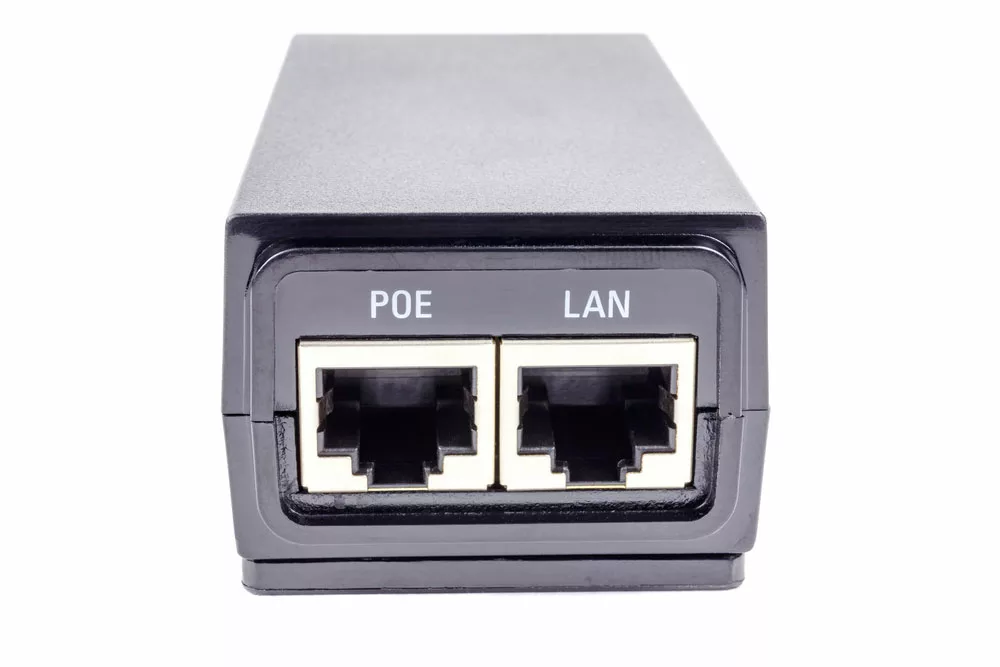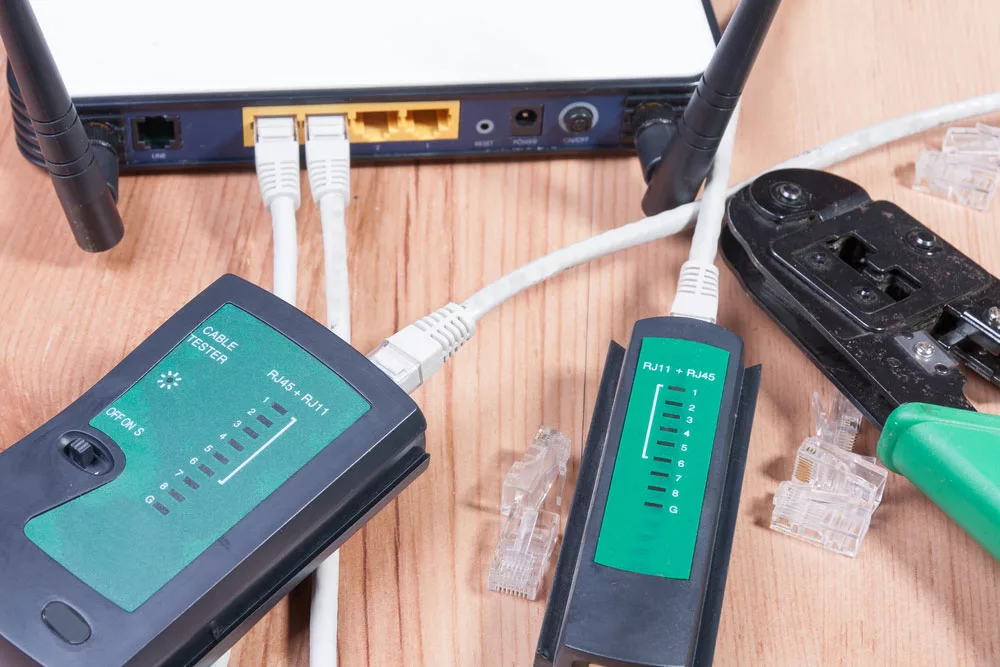The bad Ethernet cable symptoms, While some use Ethernet cables for Wi-Fi, that doesn’t mean Ethernet cables are not used anymore.
The truth is that most routers and modems for wireless networks may come with an Ethernet cable plugged into the back.
On the other hand, if you want an efficient and secure connection, you should consider a direct link to your router using an Ethernet cable.
These cables are responsible for transmitting internet signals needed for connectivity. However, most people who use Ethernet cables don’t know that ethernet cables can undergo some damage. The article below will discuss the various bad Ethernet cable symptoms.
Table of Contents
- How Do Ethernet Cables Go Bad?
- Signs That an Ethernet Cable Isn’t Working Right
- How to test an ethernet cable?
- Quick Fixes For a Faulty Ethernet Cable
- Conclusion
How Do Ethernet Cables Go Bad?
Your cable should maintain optimum shape, whether an HDMI, coaxial, or Ethernet cable. Some like to place their lines behind furniture, but your cables can face some damage or pinch in extreme situations.
Also, ethernet cables act as network nerves, linking different devices by enabling signals to pass from one device to the next. Over time, they can begin to deteriorate, resulting in connection problems.
Another element we should all keep in mind is that so many cable manufacturers from all over the globe produce these items, but not all of them are top quality.
In other cases, you may find that the reason behind your internet connection issue is some external objects, such as screws or nails, that could have pierced your cable wire. Such a situation often leads to obstructions in the interface of waves, such as Electromagnetic waves.
Once the damage is visible on the line, you should consider it as an indication that your Ethernet cable needs replacing.
Signs That an Ethernet Cable Isn’t Working Right
Issues in your network connection as you work on a device can, at times, be an indicator of bad cables. Several signs can indicate whether or not your Ethernet cables are working correctly. They include the following:
Connectivity Loss
An improper network connection often leads to poor signal transmission, affecting your device’s speed. If you plug your cable into the adapter and find that zero lights are coming on, the reason could be that the device is having issues because of faulty Ethernet cables.
Of course, this problem could also indicate a problem within the adapter.
Error alerts from the OS(operating system) can indicate that your Ethernet cables aren’t fully functional and that something isn’t right.
Ensure you check your cables between the router/modem and the network switch if you notice a disconnection in any devices connected to the network.
Discontinuous Network Connection
In most cases, a discontinuous network connection can be a worrying issue, especially for High Definition lovers. For instance, pro gamers who do not wish to deal with lag require high speeds and constant internet connection.
Poorly connected or low-quality cables are typically the leading cause of lag issues, which create considerable issues during working times.
It would be best if you always observed your internet speed. If you discover that your connection is getting some slow internet speeds, it is most likely that your devices aren’t getting the required device bandwidth, which is usually measured in Megabit per second (Mbps)
It is essential to remember that a slight decrease in your internet speed is not abnormal for most Ethernet connections. Highs and lows in internet speed occur often and are usually the cause of lag issues on smartphones and computers.
Wiggling can re-establish a failed connection.
Ethernet cables come with a built-in plastic lever that puts the cable firmly in place inside the Ethernet adaptor port. If there are any problems with the lever, like, let’s say, it breaks, the connection can only remain through gravity.
It will drop out if the cable is no longer in place because the smallest movements can disrupt the connection without the lever to secure it.

Caption: Ethernet Adapter Port
How to test an ethernet cable?
Of course, based on the signs above, we can’t conclude that it’s the cable problem. Here is also a process involved in testing these cables, which is as follows.
Using a Cable Tester
Step 1
You will need to start by getting an ethernet cable tester that you can use if you think that your LAN cable isn’t transmitting a signal. The tester will also help to confirm if the cable is bad and usually come in 2 pieces, one being the main testing port, while the other is the receiver port.
Step 2
Once you have your tester, you must plug one end of the wire into the TX plug found on the tester (insertion port). Make sure it clicks so that you know the cable is properly connected. It makes no difference which end of the cable you decide to insert into each port since both ends are the same.
Step 3
Plug the opposite end of the cable into the RC receiver jack so that the tester can measure the transmission. If your test happens to have a separate piece for its RX input, insert the cable there.
Step 4
Switch the tester on and see if any lights fail to activate once the cycle begins. This cycle will happen through 8 positions and with the ground connection, each represented by a light on the tester.
The ground position won’t light up because the cable isn’t grounded. If everything is okay, all the positions should light up. However, if any of them fails to do so, in addition to the ground, your cable isn’t good.
Step 5
You should replace the cable if the tester’s lights do not light up beside the ground, which does not illuminate.
That is because if the lights fail, it usually indicates that the cable is not functioning and cannot transmit a signal. There is usually no way around this but to get a replacement.
In addition, you must keep in mind the ground position doesn’t light up since the cable is not grounded. So you ignore it during the testing because it won’t illuminate.
Troubleshooting Without a Tester
Step 1
A good indicator that your ethernet cable may be faulty is when you have a bad connection to your TV or computer.
For instance, if your TV is displaying a ‘no signal’ message, or the connection bar on your computer is low or doesn’t have a connection, you should check your cable. However, don’t forget that this will only apply to your LAN cable.
For a WiFi connection, issues with the signal could be because of a bad router or modem.
Step 2
Check if your cable is fully plugged into the modem and computer. Sometimes, problems with your signal could result from an improper physical cable connection. So, ensure your cable is in all the way and do the same with your TV. Also, don’t forget the clicking sound since it will let you know it is fully plugged in.
Step 3
The plug where a LAN cable connects to your modem has a green light indicating signal strength. Seeing this light means you have a good signal, whereas seeing a red or yellow light will indicate a signal issue.
A flashing green light is also a sign of good connectivity. Nonetheless, you can always test your cable to see if it is not good.
Step 4
If you are experiencing any issues with your LAN connection, you should try checking your cable for any physical signs of damage. Kinks, rips, or sharp bends can negatively affect your cable connection. You could test your cable or replace it if you discover any problems.
Step 5
You can always differentiate if the connection issue is with your cable or modem by using a new LAN network and seeing if it improves. Just plug your new cable into your device and modem, then wait to see if your device can establish a signal.
If it is successful, the problem was most likely with your previous cable. If not, then the issue could be with your modem.
However, the cable may not be as easy to test if it is particularly long and has to go through obstructions such as walls.

Caption: Ethernet Cable Tester
Quick Fixes For a Faulty Ethernet Cable
Below are some of the methods you can use to try fixing some of the issues associated with bad Ethernet cables:
- You can try cutting the areas with bends, wiggles, or tangles.
- Try cutting off the insulation found on each side about 3 inches.
- Also, you can peel back the skins and find the twisted wires one at a time. Doing so will allow you to see the copper wire for each twisted pair. They’ve connected to the same colored wires accordingly, and you need to twist both wires to make a single twisted wire.
- You can apply insulation tape on the joints of the connected cables. Finally, repeat the procedure on all the twisted pairs where you had cut out the cable’s insulation.
Following the abovementioned steps, you can eliminate all cuts, tangles, or bends in your faulty Ethernet cables.
Conclusion
Many people use Ethernet cables in their homes and businesses. They provide high-speed connections. Ethernet cables experience wear and tear like everything else and sometimes require replacement.
If you encounter issues with your ethernet cables and require professional assistance, don’t hesitate to contact us.
